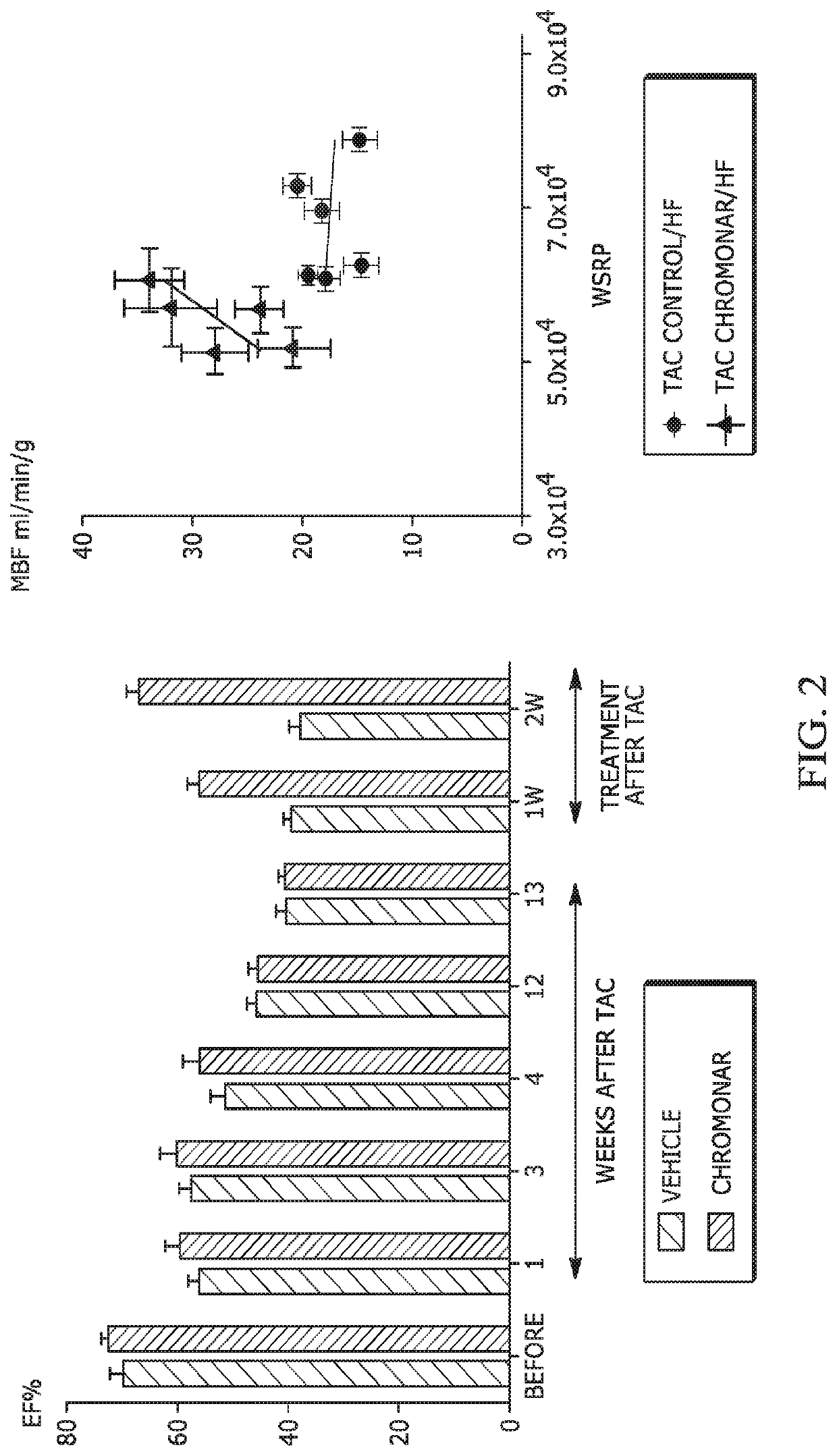Vasodilators for treatment of heart failure
a heart failure and vasodilator technology, applied in the field of heart failure vasodilators, can solve the problems of failure progressing to pulmonary congestion and ultimately death, insufficient pumping action, and inadequate cardiac output to meet the needs of the body, so as to improve cardiac function, prevent ischemia, and increase myocardial blood flow.
- Summary
- Abstract
- Description
- Claims
- Application Information
AI Technical Summary
Benefits of technology
Problems solved by technology
Method used
Image
Examples
example 1
Is Heart Failure a Coronary Microvascular Disease?
[0061]Currently heart failure is associated with several conditions: reduced cardiac function caused by myocardial infarction, mutations in contractile and structural proteins, and inflammation such as viral-induced myocarditis. Ajani et al., Cardiovasc Revasc Med., 7:234-6 (2006) Other than the mutations in the contractile and structural proteins, the exact cause of heart failure is not known. Even in the situation of heart failure occurring secondary to a myocardial infarction, the reason why the remaining viable myocardium eventually fails is obscure. Although the inventors do not ascribe to a “one solution” type answer, the fact that all types of heart failure are characterized by diffuse fibrosis and all benefit from a reduction in metabolic demands, they propose a conceptual explanation for several types of HF of unknown etiology in FIG. 1. The panel on the left is a conceptualization of how inadequate coupling between metaboli...
example 2
Chromonar compared with Standard Cardiovascular Agents
[0067]The effects of chromonar were then compared to a current “standard of care” used to treat patients in heart failure—a beta-adrenergic antagonist, also known colloquially as a beta-blocker. This comparison is shown in FIG. 7—note that the TAC (transaortic constriction) procedure induces heart failure as shown by the large decrease in cardiac function (EF %; control vs 4 weeks). At week 5 the treatment for heart failure, propranolol (beta-blocker) or chromonar was started. Cardiac function improved dramatically with chromonar, but continued to decrease with propranolol. This suggests that the treatment of heart failure with chromonar has a far better outcome than a current standard of care treatment—a beta-blocker.
[0068]FIG. 8 shows results that show implications towards the diseases of INOCA (ischemia no coronary artery disease), MINOCA (myocardial ischemia no coronary artery disease) and HFpEF (heart failure with preserved ...
PUM
| Property | Measurement | Unit |
|---|---|---|
| diameter | aaaaa | aaaaa |
| diameter | aaaaa | aaaaa |
| diameter | aaaaa | aaaaa |
Abstract
Description
Claims
Application Information
 Login to View More
Login to View More - R&D
- Intellectual Property
- Life Sciences
- Materials
- Tech Scout
- Unparalleled Data Quality
- Higher Quality Content
- 60% Fewer Hallucinations
Browse by: Latest US Patents, China's latest patents, Technical Efficacy Thesaurus, Application Domain, Technology Topic, Popular Technical Reports.
© 2025 PatSnap. All rights reserved.Legal|Privacy policy|Modern Slavery Act Transparency Statement|Sitemap|About US| Contact US: help@patsnap.com



